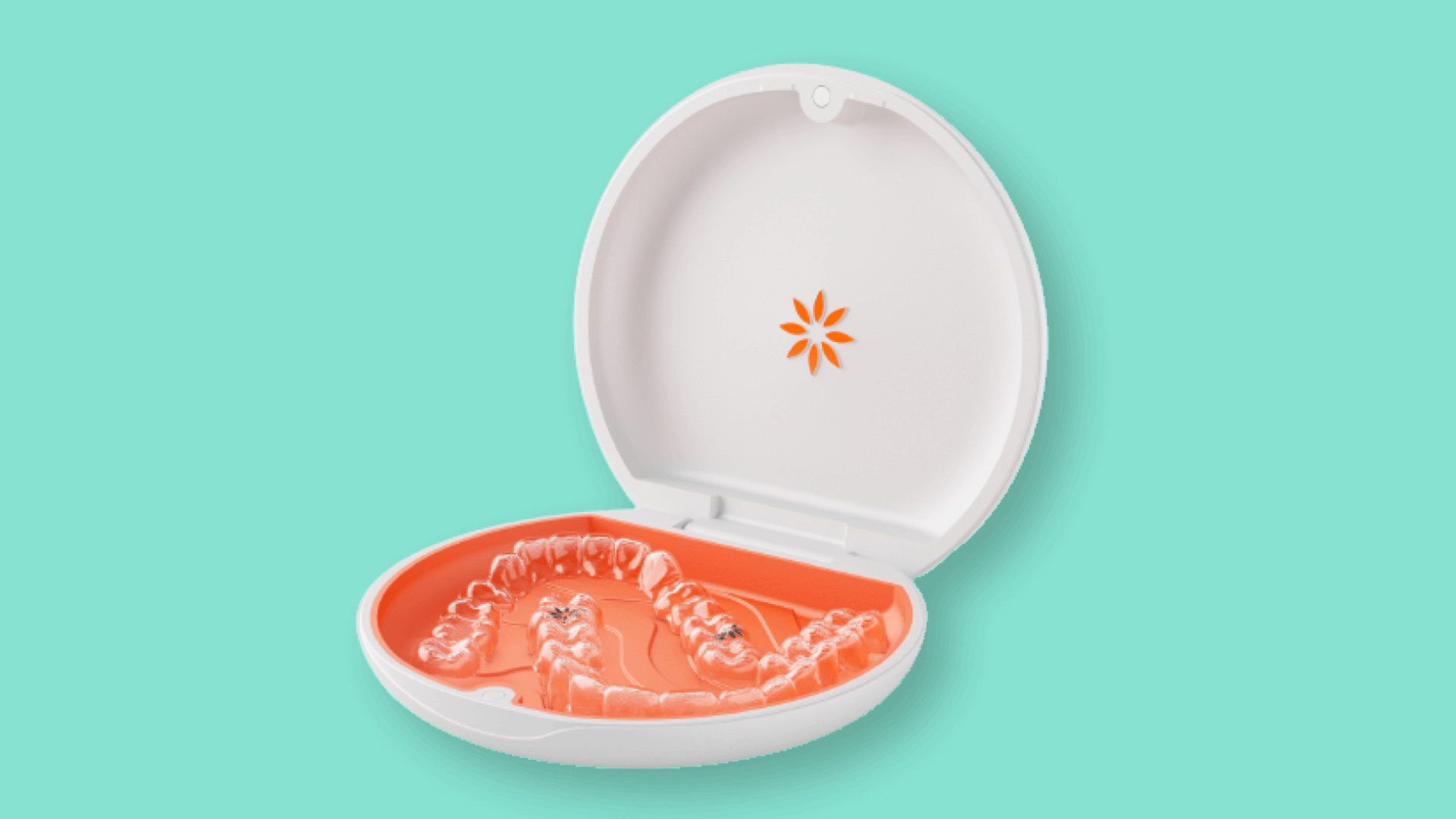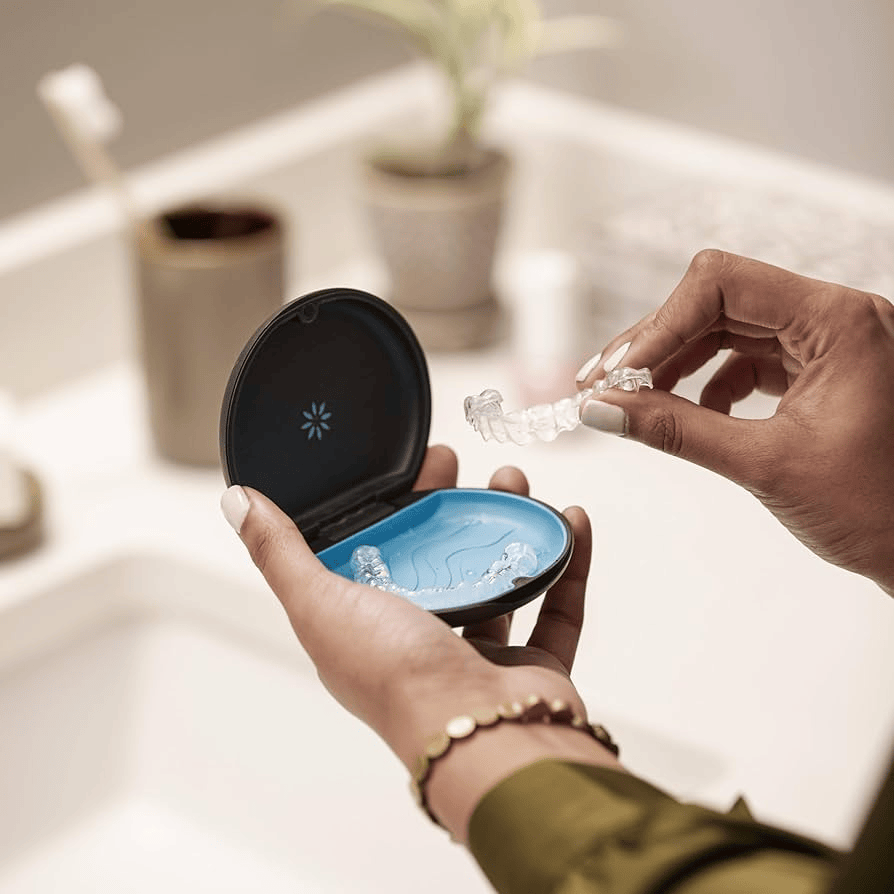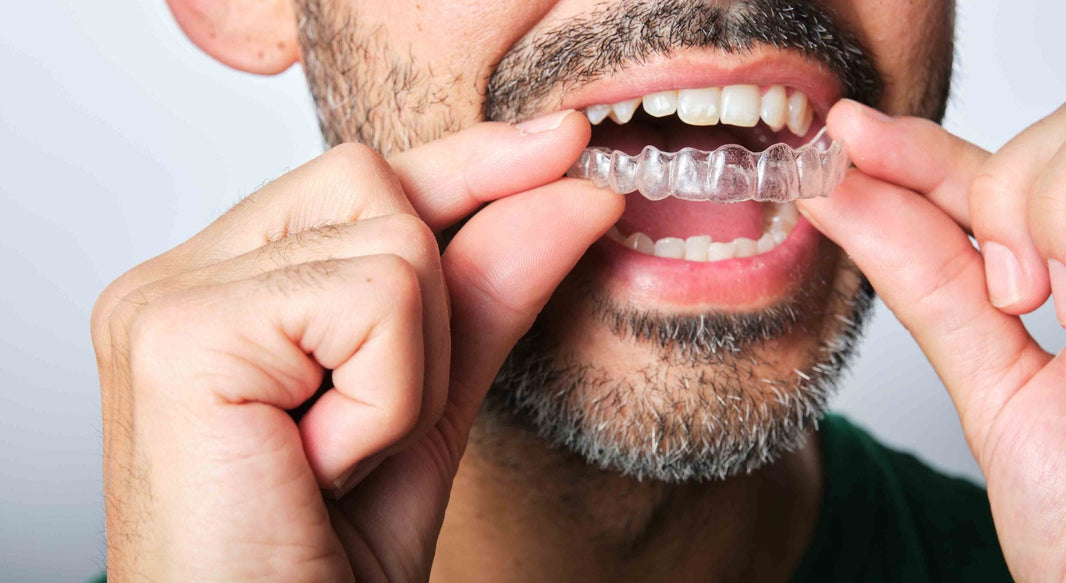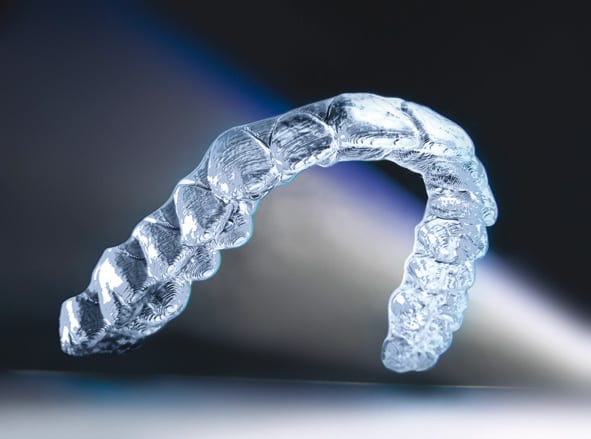Retainers—whether fixed, removable, or Vivera—are essential to keeping teeth aligned after orthodontic treatment, each requiring specific care routines to stay effective and hygienic. Daily cleaning, proper storage, and regular check-ups help prevent issues like fit problems, odors, or damage. Consistent wear and long-term maintenance are key to preserving your smile and avoiding unwanted shifting.
Table of contents
Fixed Retainers
Fixed retainers are wires bonded to the back of your teeth. They are typically used for the lower front teeth and sometimes the upper front teeth. These retainers are effective because they are always in place, ensuring that teeth do not shift back over time. However, because they are permanent, they require diligent oral hygiene.

Advantages: One of the significant advantages of fixed retainers is their consistent presence. You don't have to worry about forgetting to wear them, as they're always there. This reliability makes them particularly effective in maintaining the alignment of your teeth.
Challenges: Despite their benefits, fixed retainers can pose some challenges. They can make flossing slightly more complex, requiring special techniques or tools like floss threaders to clean between teeth effectively. It's essential to maintain a rigorous oral hygiene routine to prevent plaque build-up around the retainer.
Maintenance Tips: Regular dental check-ups are crucial when you have a fixed retainer. Your dentist can ensure that the bonding is intact and that your teeth remain in the correct position. Additionally, using a water flosser can help clean around the retainer more thoroughly.
Hawley & Essix Retainers
Removable retainers, such as the Hawley and Essix retainers, are taken out when eating or brushing teeth. They are easy to clean and are often used after the initial few months post-braces. These retainers are convenient but require discipline to wear as directed by your orthodontist.

Types of Removable Retainers: The most common types are Hawley retainers, which consist of a metal wire and acrylic base, and Essix retainers, which are clear plastic trays. Each type has its benefits, with Hawley retainers being adjustable and Essix retainers being less visible.
Cleaning Routine: It's essential to establish a daily cleaning routine for removable retainers. Brush them gently with a soft-bristled toothbrush and mild soap. Avoid hot water as it can warp plastic retainers. Soaking them in a retainer cleaning solution or a vinegar-water mix weekly can help maintain freshness.
Wear and Care: Wearing your retainer as prescribed by your orthodontist is vital. Typically, you'll need to wear them full-time initially, gradually reducing to nighttime wear. Always store your retainer in its case when not in use to prevent loss or damage.
Vivera Retainers
Vivera retainers are made by the makers of Invisalign and are known for their durability and comfort. They are clear, removable retainers that fit over your teeth. Unlike traditional retainers, Vivera retainers are designed using 3D imaging technology, making them a perfect fit.

Durability and Comfort: Vivera retainers are made from a strong thermoplastic material that ensures durability while providing comfort. They are less prone to cracking and breaking, making them a reliable option for long-term use.
Precision Fit: The 3D imaging technology used in creating Vivera retainers ensures a precise fit to your teeth. This precision helps in maintaining the alignment of your teeth more effectively, reducing the risk of shifting.
Care Instructions: Like other removable retainers, Vivera retainers require regular cleaning. Use a non-abrasive toothpaste or a mild soap with a soft-bristled toothbrush. Avoid using harsh chemicals or hot water, as they can damage the retainer.
Daily Care Tips for Retainers
Proper retainer care is vital to ensure they remain effective and hygienic. Here are some essential tips for maintaining your retainers:
Cleaning Your Retainer
Daily Rinsing: Rinse your retainer with lukewarm water every day. Avoid hot water as it can warp the material. This simple step helps remove debris and keeps your retainer fresh between more thorough cleanings.
Brushing: Use a soft-bristled toothbrush with mild dish soap or a non-abrasive toothpaste to gently brush your retainer. This helps remove plaque and prevent discoloration. Make sure to clean all surfaces, including the inside of any wires or grooves.
Soaking: Soak your retainer in a retainer cleaner or a mixture of water and white vinegar once a week to keep it fresh and odor-free. This process helps eliminate bacteria build-up and can prevent unpleasant smells.
Handling Your Retainer
Storage: Always store your retainer in its case when not in use. This prevents loss or damage and keeps it away from pets or small children. Keeping your retainer in a safe place also helps avoid accidental breakage.
Avoiding Heat: Keep your retainer away from heat sources like direct sunlight, hot car interiors, or dishwashers to prevent distortion. Heat can compromise the fit of your retainer, making it less effective in maintaining alignment.
Handling with Care: When inserting or removing your retainer, handle it gently to avoid bending or breaking. Using two hands can help distribute pressure evenly and prevent damage.
Regular Check-Ups
Schedule regular visits with your orthodontist to ensure your retainer fits well and is in good condition. Your orthodontist can adjust your retainer if necessary to maintain its effectiveness.
Check-Up Frequency: Initially, you might need more frequent check-ups to ensure your retainer is functioning correctly. Over time, these can be reduced to annual visits, but always follow your orthodontist’s advice.
Monitoring Changes: During these visits, your orthodontist can monitor any changes in your bite or alignment. Early detection of issues can prevent more significant problems down the line.
Professional Cleaning: Occasionally, professional cleaning might be recommended to remove tartar or stains that regular cleaning doesn’t address. This can help maintain the appearance and hygiene of your retainer.

Troubleshooting Common Retainer Issues
Even with the best care, you might encounter some issues with your retainer. Here's how to handle common problems:
Retainer Doesn't Fit
If your retainer feels tight or doesn't fit properly, it may be due to slight teeth shifting. Contact your orthodontist immediately for an adjustment.
Immediate Action: As soon as you notice a fit issue, avoid forcing the retainer into place. This can cause damage to the retainer or your teeth. Instead, schedule an appointment with your orthodontist promptly.
Causes of Poor Fit: Changes in fit can result from not wearing the retainer as prescribed or from natural changes in your oral structure. Stress or hormonal changes can also subtly affect your teeth, impacting retainer fit.
Preventive Measures: To prevent fit issues, adhere strictly to the wear schedule provided by your orthodontist. Consistency in wearing your retainer is key to maintaining its fit and effectiveness.
Broken or Damaged Retainer
A damaged retainer should be addressed promptly. Avoid attempting repairs at home and consult your orthodontist for a replacement or repair.
Identifying Damage: Inspect your retainer regularly for cracks, bends, or any signs of wear. Early detection can prevent more extensive damage and potential dental issues.
Seeking Professional Help: If you notice any damage, bring your retainer to your orthodontist. They can assess whether it can be repaired or if a replacement is necessary.
Temporary Solutions: If your retainer is damaged and you cannot see your orthodontist immediately, continue to wear it if possible to maintain alignment. However, do not force it if it causes pain or discomfort.
Retainer Odor
If your retainer develops an unpleasant odor, it might be due to bacteria build-up. A thorough cleaning with a disinfecting soak can help eliminate odors.
Preventing Odors: Regular cleaning is the best way to prevent odors. Make sure to follow daily and weekly cleaning routines to keep your retainer fresh.
Deep Cleaning Solutions: Occasionally, deeper cleaning may be required. Use a retainer cleaning tablet or a vinegar and water solution for a more thorough clean.
Long-Term Solutions: If odors persist despite cleaning, consult your orthodontist. They may recommend professional cleaning or assess if a replacement is needed.
The Importance of Consistent Retainer Use
Wearing your retainer as prescribed by your orthodontist is crucial to preventing teeth shifting. Consistent use ensures that your teeth remain in their new positions, maintaining the smile you worked hard to achieve.
Nightly Wear
For most individuals, wearing a removable retainer at night is sufficient to keep teeth aligned. However, it's important to follow your orthodontist's instructions regarding wear time.
Establishing a Routine: Create a nightly routine that includes retainer care. This will help ensure you wear your retainer consistently and maintain its hygiene.
Monitoring Changes: Pay attention to changes in how your retainer fits or feels. Reporting changes to your orthodontist can help address potential issues early.
Benefits of Nightly Wear: Consistent nightly wear maintains alignment from orthodontic treatment. It prevents shifting and ensures long-term success.
Long-term Commitment
Retainer use is a long-term commitment. While the frequency of use may decrease over time, it's essential to wear your retainer regularly for years to maintain results.
Adapting Over Time: As your teeth stabilize, your orthodontist may adjust your wear schedule. Continued use is essential to prevent any relapse in alignment.
Commitment to Care: Maintaining a commitment to retainer use involves care and check-ups. This ensures the retainer remains effective and in good condition.
Understanding Relapse Risks: Be aware of the risks of not wearing your retainer. Teeth can shift to original positions, undoing your orthodontic treatment.
How do you take care of Vivera retainers?
To keep your Vivera retainers clean, gently brush them with a soft-bristle toothbrush and cool water before each use. Avoid using toothpaste, which can be abrasive. For a deeper clean, soak them once a week in a cleaning solution like Retainer Brite, which is available online through retailers like Amazon.
How many hours a day should you wear Vivera retainers?
During the first 6 months after treatment, Vivera retainers should be worn around 22 hours a day—removing them only for meals and brushing. After that period, you’ll typically shift to nighttime wear only, around 8 to 12 hours per night, depending on your orthodontist’s recommendation.
What is the difference between Vivera and Invisalign retainers?
Invisalign aligners are used to actively move your teeth into alignment, while Vivera retainers are used after treatment to keep them in their final position. Since teeth can shift back without reinforcement, Vivera retainers are crucial for long-term results and stability.
How to maintain a removable retainer?
Clean your removable retainer daily using mild soap and a soft toothbrush to prevent buildup. Never rinse with hot water, as high temperatures can warp the material. When not wearing it, always store the retainer in its case to avoid damage or loss.
Conclusion
Caring for your retainer is a small but significant part of maintaining your orthodontic results. By understanding the type of retainer you have and following these care tips, you can ensure your smile stays beautiful and your teeth remain in their proper positions. Regular check-ups with your orthodontist and diligent retainer maintenance are the keys to long-term success.
Remember, whether you have a fixed, removable, or Vivera retainer, consistent care and use will preserve your orthodontic investment and keep your smile looking its best.
Ongoing Education: Stay informed about the best practices for retainer care. Advances in orthodontics might offer new solutions or improvements to existing care routines.
Community Support: Joining online forums or support groups can provide additional tips and encouragement from others who have undergone orthodontic treatment.
Personal Responsibility: Ultimately, the responsibility for maintaining your smile lies with you. By taking proactive steps in retainer care and use, you'll enjoy the benefits of your orthodontic treatment for many years to come.






